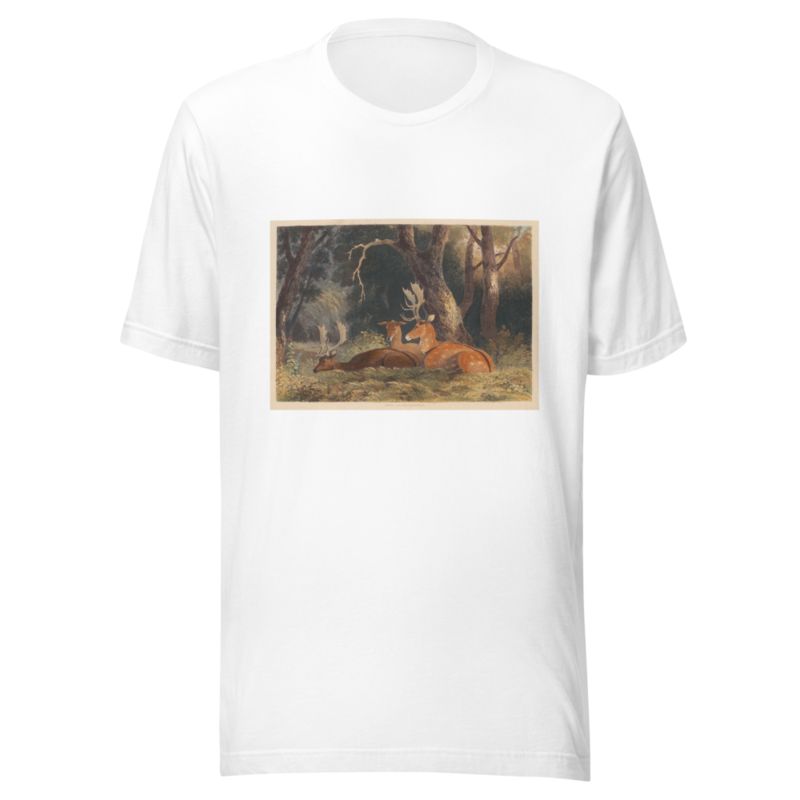Description
Fallow Deer by Newton Limbird Smith Fielding printed on a T-Shirt
About the T-Shirt
Regular fit
Standard length, the fabric easily gives into movement
Casual wear
A classic, everyday option loved by our customers
Side-seamed
Constructed by sewing two parts together, creating a fitted look
The Unisex Staple T-Shirt feels soft and light with just the right amount of stretch. It’s comfortable and flattering for all. We can’t compliment this shirt enough–it’s one of our crowd favorites, and it’s sure to be your next favorite too!
- Solid colors are 100% Airlume combed and ring-spun cotton
- Ash color is 99% combed and ring-spun cotton, 1% polyester
- Heather colors are 52% combed and ring-spun cotton, 48% polyester
- Athletic and Black Heather are 90% combed and ring-spun cotton, 10% polyester
- Heather Prism colors are 99% combed and ring-spun cotton, 1% polyester
- Fabric weight: 4.2 oz./yd.² (142 g/m²)
- Pre-shrunk fabric
- 30 singles
- Side-seamed construction
- Tear-away label
- Shoulder-to-shoulder taping
- Blank product sourced from Nicaragua, Mexico, Honduras, or the US
Newton Limbird Smith Fielding (1799–1856)
Newton Smith Fielding, was an English painter and lithographer.
Fielding was born in London in 1799, the youngest son of Nathan Theodore Fielding. He exhibited at the Society of Painters in Water-colours, showing some landscapes in 1815, and cattle pieces in 1818. He is best known for his paintings and engravings of animals. Besides painting in water-colours, he also made etchings, aquatints, and lithographs, becoming especially proficient in the last of these. He moved to Paris where he lived until his death, on 12 January 1856; he was much esteemed there, entering the 1827 Paris Salon and teaching the family of Louis-Philippe. In 1836 he published in London a set of Subjects after Nature, and in Paris he published sets of lithographs of animals, and illustrations to various works.
He also published Three Hundred Lessons; or, a Year’s Instruction in Landscape Drawing, including Marine Subjects, with Hints on Perspective, (1852); Lessons on Fortification, with Plates, (1853); A Dictionary of Colour, containing Seven Hundred and Fifty Tints, to which is prefixed a Grammar of Colour, (1854); What to Sketch with; or, Hints on the Use of Coloured Crayons, Water-colours, Oil-colours, Black and White Chalks, Black-lead Pencil, and the Author’s new Method of Preserving the Lights with Composition, (1856); and How to Sketch from Nature; or, Perspective and its Application, (2nd edit. 1856).






Reviews
There are no reviews yet.